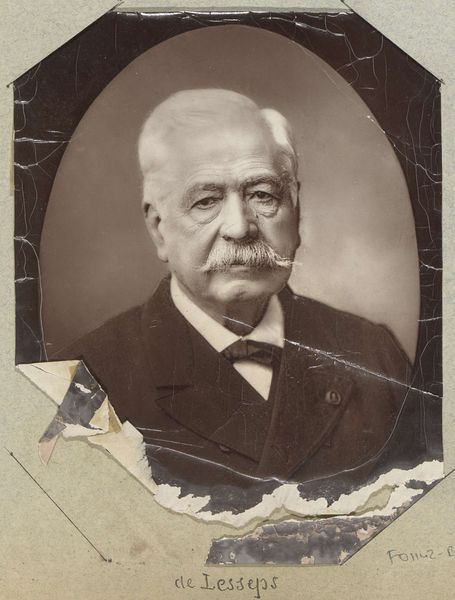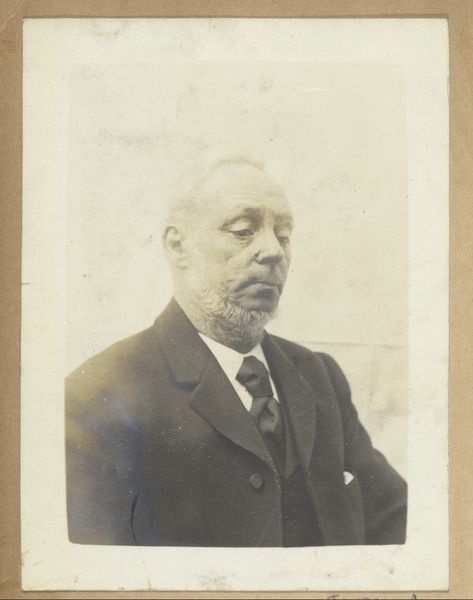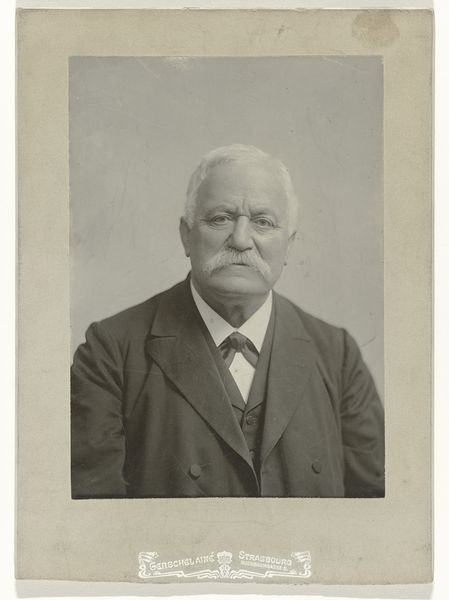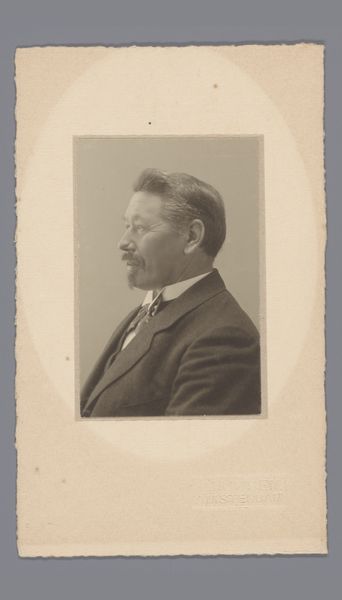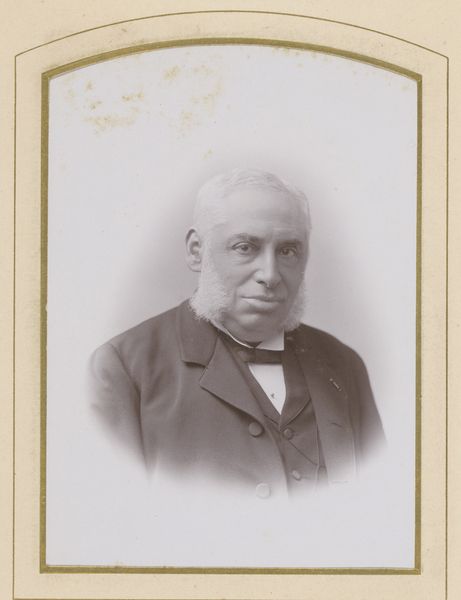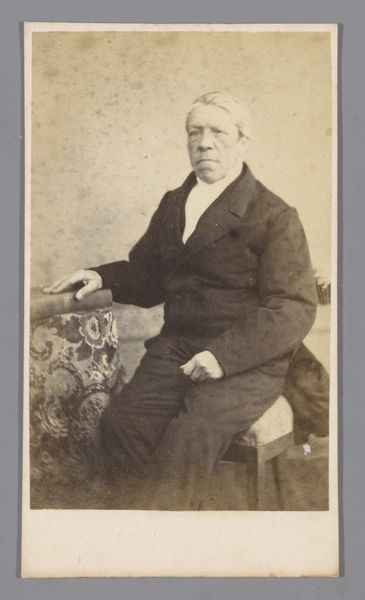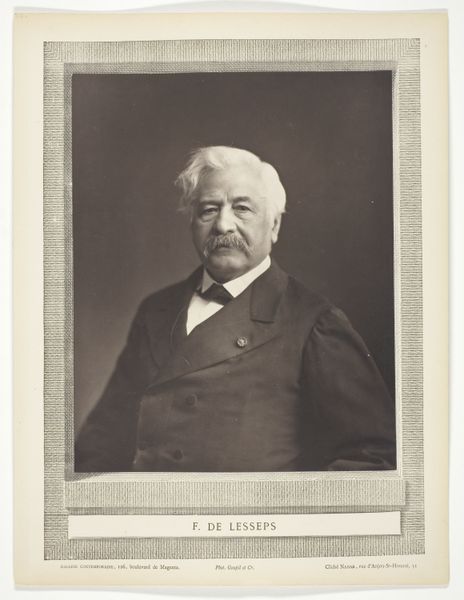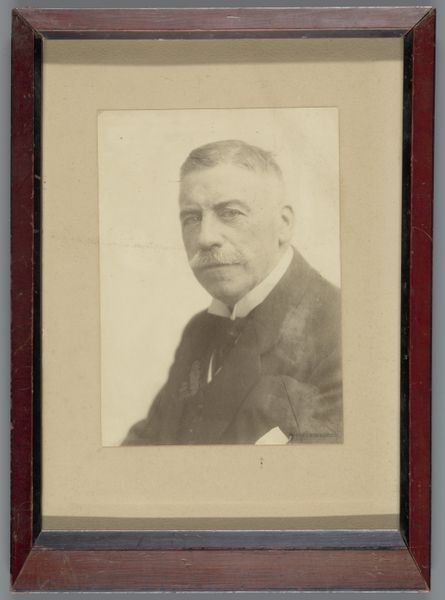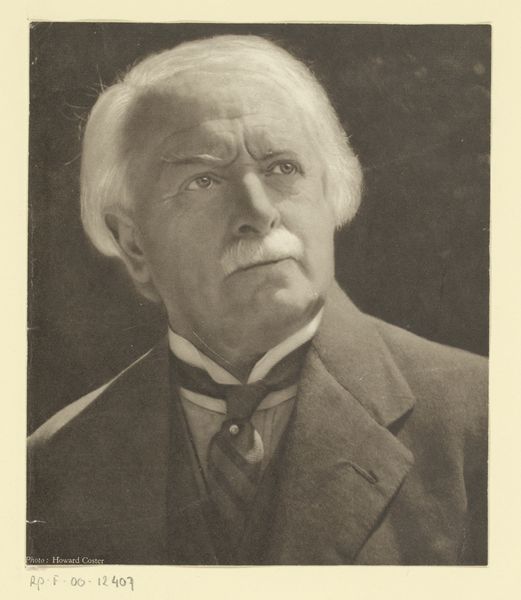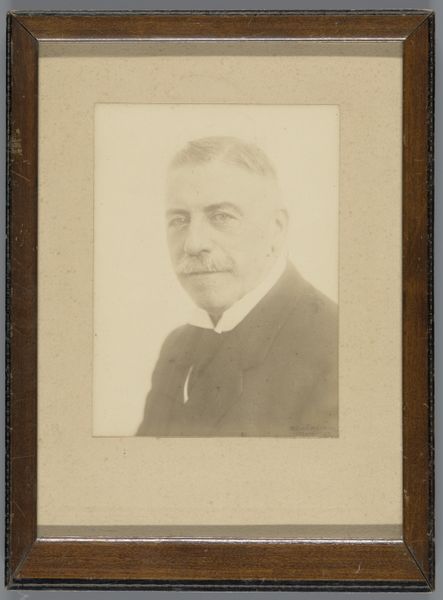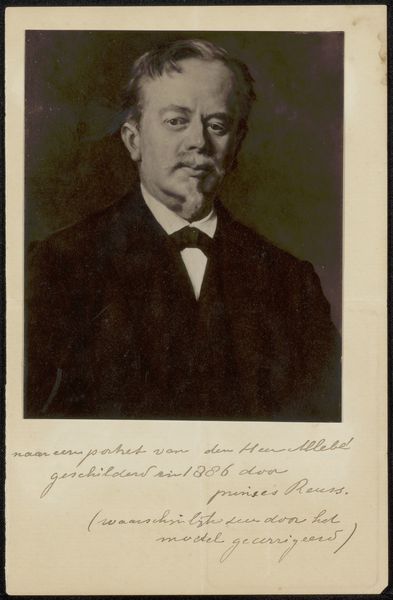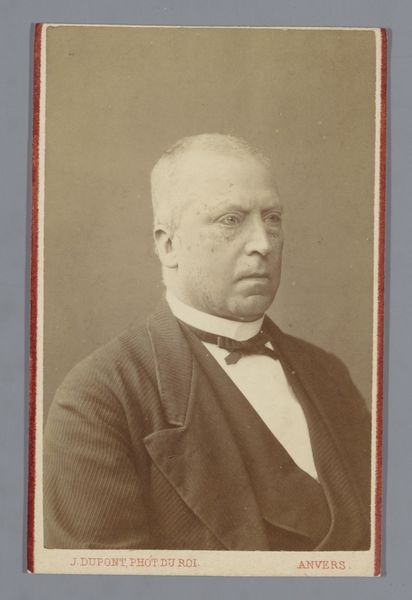
Portret van Hermann Moos, kijkend naar rechts, gekleed in donker kostuum met strik Possibly 1892 - 1928
0:00
0:00
print, photography, gelatin-silver-print
#
portrait
#
print photography
#
still-life-photography
# print
#
photography
#
gelatin-silver-print
Dimensions: height 210 mm, width 160 mm
Copyright: Rijks Museum: Open Domain
Curator: Before us, we have an interesting gelatin silver print, titled "Portret van Hermann Moos, kijkend naar rechts, gekleed in donker kostuum met strik". Its creation date is estimated to be somewhere between 1892 and 1928. What are your initial thoughts? Editor: Stark and serious. The tones are quite limited; mostly variations of gray giving a muted effect. His gaze is directed, yet the image possesses an overall stillness that is somewhat haunting. Curator: The beauty of photography, isn't it? A tangible relic of a moment frozen in time. The high contrast, with its dark attire against his bright hair, creates a compelling, almost graphic quality. Note the precise framing and tight composition—a face suspended between light and shadow. Editor: True. This kind of formal portraiture became almost ubiquitous during that period, marking a shift in the accessibility of image making, and democratizing representation beyond painting to include a wider demographic. Who was Hermann Moos? And why was it important to record his image so formally? Curator: Alas, the image is by Anonymous, so we can only wonder! I think there’s an elegant dialogue at play between texture and form: from the sheen on the fabric of his suit to the soft, blurry details of his face—each area provides contrast. It also has strong ties to historical representations, the rigid and fixed pose and gaze reminiscent of powerful public figures and a societal preoccupation with likeness, status and the cult of celebrity. Editor: Perhaps it reflects the subject's social standing. Notice the deliberate gesture towards respectability, perhaps even to memorialization given the solemn tone? What survives for us is less the man but more the idea of a distinguished figure. Curator: Yes, I concur. The composition directs your eye not to a specific aspect, but toward the face, the source of expression, which contributes so powerfully. Even in its solemn stillness, this photograph encourages us to question our own notions about representation and time. Editor: I find myself reflecting on the image production, how in those early photographic processes there was something of alchemical chance in freezing life to a two-dimensional frame. Almost creating the ghost of the subject in its silvery stillness. Curator: Exactly. It allows us to confront a face of history that asks for acknowledgement in a space unbound by chronology or memory. It seems an apt closing thought.
Comments
No comments
Be the first to comment and join the conversation on the ultimate creative platform.

